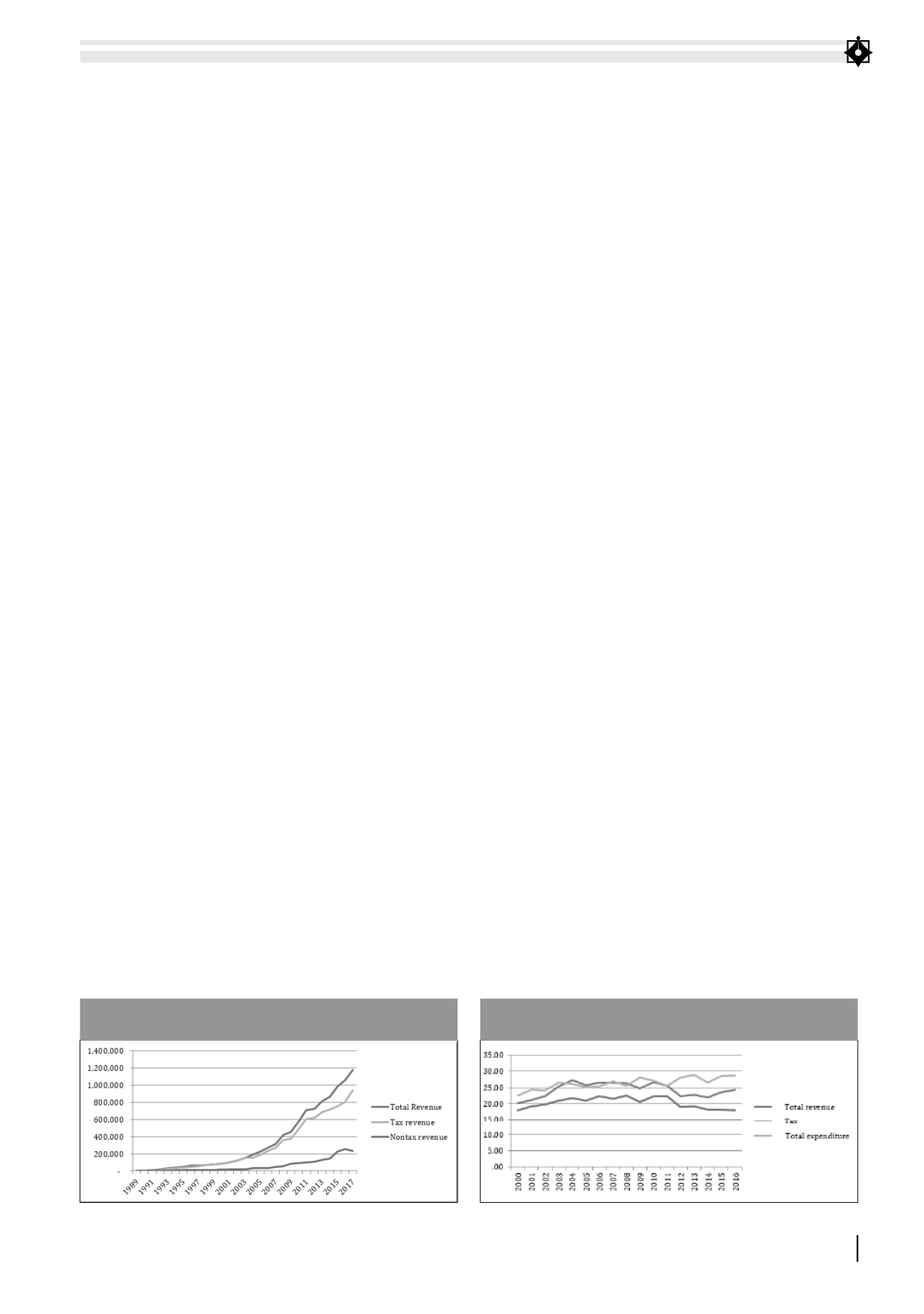
REVIEW
of
FINANCE -
November, 2018
3
14 times compared to 2017); Paying Taxes
ranked 86 out of 190 nations (increased 81 times
compared to 2017), ranked the fourth in ASEAN
countries (WB, 2018). Although there have been
many improvements over the past few years, tax
evasion, and even corruption in tax management
is widespread.
The process of tax refrom
The tax reform process can be divided into
three periods as followings:
Before 1990
Tax policies were promulgated by the ordinance
or decree. It was not in line with constitution on
tax. In the first period during 1990-1995 period,
therefore, the requirement to reform the tax system
in this period was to be developed and issued in a
system of tax laws, applied uniformly throughout
the country. There were many tax laws such as
law on special consumption tax, law on profit tax,
law on export tax, law on agricultural land use
tax...
The period from 1996 to 2004
The rapid economic growth is the premise
for Vietnam’s reform of tax system. The goal
of this step is to consolidate revenue collection
by strengthening management and preventing
revenue losses; Build a budget based on internal
resources; Prepare for regional economic
integration. To achieve this goal, it is necessary
to develop taxes that are compatible with the
international community. At the same time, it
needs to adjust and supplement the existing taxes
to suit economic development-they issued value
added tax to replace sales tax law and corporate
profit tax law to replace income tax law. These are
two very important laws. The scope of these two
taxes is quite wide, affecting many socio-economic
aspects. This can be as considered the most
important break through of tax reform in this step.
The period from 2005 to 2010
This phase of tax reform is being implemented
in the context of the emerging world information
technology era, the gap between countries
is getting closer in an open market, which
inevitably has many implications to tax policy of
each country. On December 6
th
, 2004, the Prime
Minister of Vietnam issued a decision approving
the reform of tax system until 2010. The objective
of the tax reform at this stage was “to synchronize
the system of tax policies with a reasonable
structure suitable to the socialist-oriented market
economy and with the associated modernization
of tax administration…” (Government, 2004).
They issued tax management law and revised
other taxes: VAT, Corporate income tax, Personal
income tax, Export - import tax, Excise tax, and
Natural resource tax.
Outstanding achievements in tax reform
After five years of implementation of the tax
system reform, basically tax incentives have been
amended, supplemented and completed in a
comprehensive manner. Basically, it is to ensure
the balance between revenues and expenditures
towards socio-economic development of the
country.
Compared with the period 2006-2010, the scale
of state budget revenue collection and tax revenue,
the 5-year fees for 2011-2015 increased about 2
times. The average state budget mobilization
rate reached 23.4% of GDP (targeted at 23-24%
of GDP), of which the mobilization from taxes
and fees reached 21.6% of GDP (target 22-23%).
The structure of state budget revenue has been
FIGURE 1. THE REVENUE IN VIETNAM 1989-2017
(BILLION VND)
Source: IMF in Vietnam
FIGURE 2. THE EVOLUTION OF TAX REVENUE IN VIETNAM
2000-2016 (% OF GDP)
Source: ADB in Vietnam


